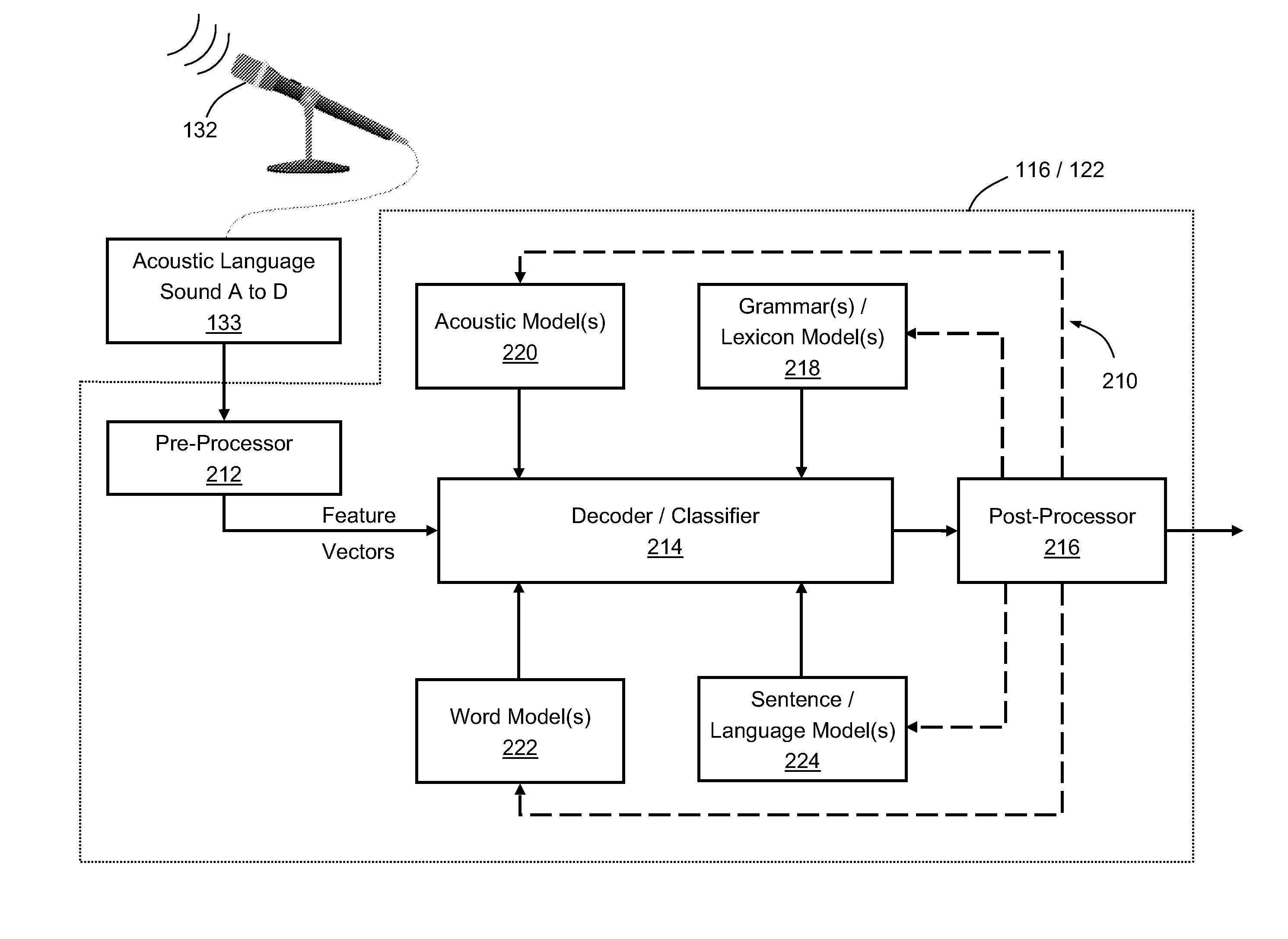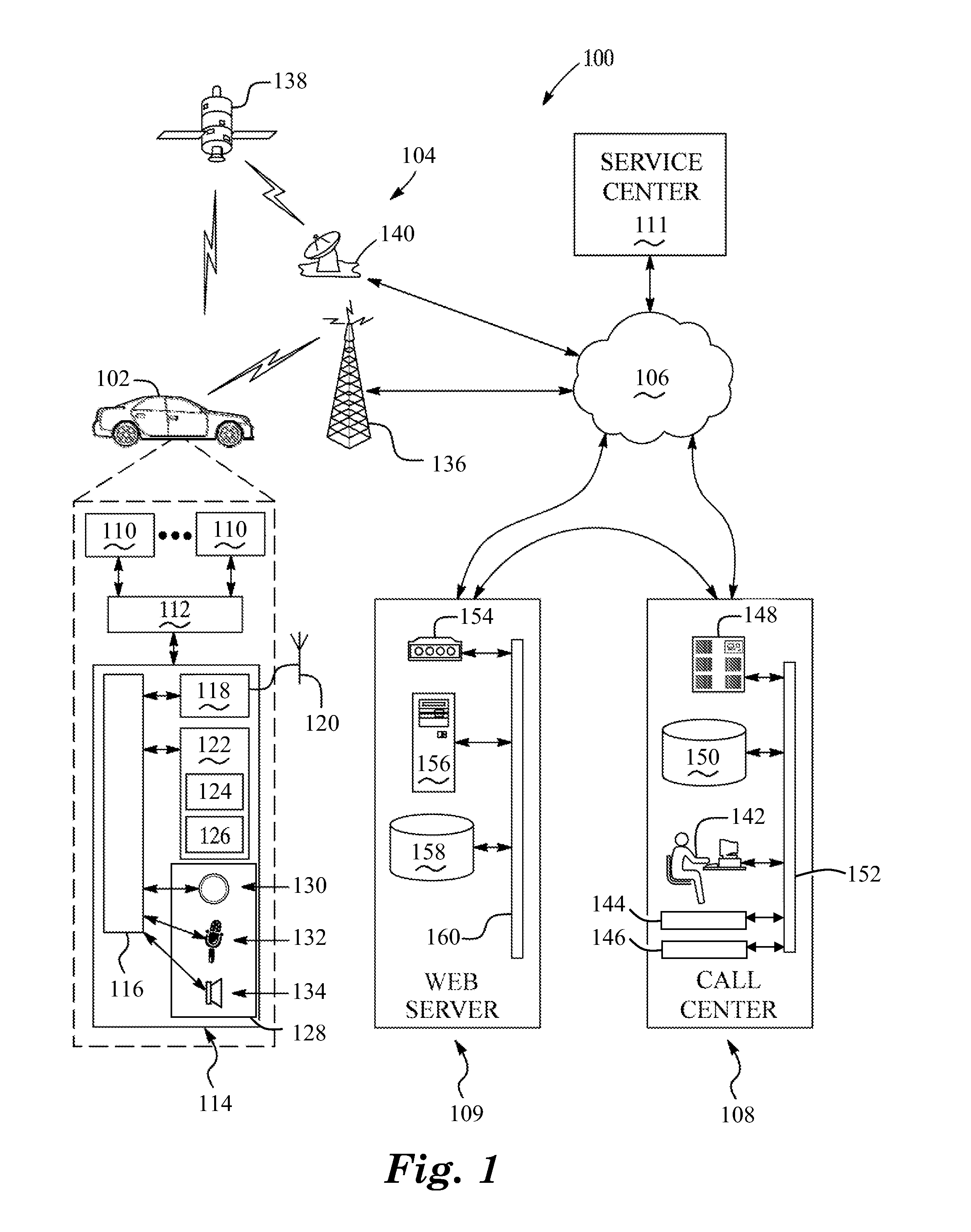Distinguishing out-of-vocabulary speech from in-vocabulary speech
a technology of in-vocabulary speech and speech recognition, applied in the field of automatic speech recognition, can solve problems such as user frustration, repetitiveness, and user frustration
- Summary
- Abstract
- Description
- Claims
- Application Information
AI Technical Summary
Problems solved by technology
Method used
Image
Examples
Embodiment Construction
[0016] An exemplary operating environment enabled with automated speech recognition (ASR) is illustrated in FIGS. 1 and 2, and can be used to implement exemplary embodiments of methods of distinguishing out-of-vocabulary speech from in-vocabulary speech. The methods can be particularly useful for recognizing discrete speech such as a nametag, or control vocabulary like numerals, keywords, or commands. The methods can include use of multiple vocabularies for efficient retrieval of, or association with, stored in-vocabulary terms, and are discussed in detail further below in conjunction with FIG. 3.
[0017] The methods can be carried out using any suitable ASR-enabled system. Preferably, however, the methods are carried out in conjunction with an ASR-enabled telematics system 100, which can include a motor vehicle 102 carrying one or more occupants or users, a wireless communication system 104 for wirelessly communicating with the vehicle 102 and a second communications system 106 that...
PUM
 Login to View More
Login to View More Abstract
Description
Claims
Application Information
 Login to View More
Login to View More - R&D
- Intellectual Property
- Life Sciences
- Materials
- Tech Scout
- Unparalleled Data Quality
- Higher Quality Content
- 60% Fewer Hallucinations
Browse by: Latest US Patents, China's latest patents, Technical Efficacy Thesaurus, Application Domain, Technology Topic, Popular Technical Reports.
© 2025 PatSnap. All rights reserved.Legal|Privacy policy|Modern Slavery Act Transparency Statement|Sitemap|About US| Contact US: help@patsnap.com



